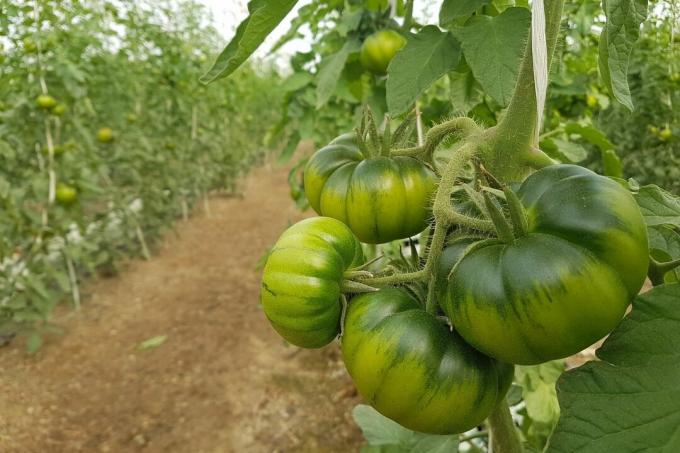How does the Marmande tomato taste? What should you consider when planting beefsteak tomatoes? Everything about the tomato variety 'Marmande' can be found here.

The 'Marmande' tomato variety delights us with its large, ribbed and deep red beefsteak tomatoes. We have put together everything you need to know about the origin, taste and cultivation of the popular tomato.
contents
- Marmande tomato: profile
- origin and history
- The best varieties of Marmande tomato
- Description and taste of the ‘Marmande’ tomato variety
- Planting and caring for Marmande: This is important to note
- Harvesting and using Marmande tomatoes
Marmande tomato: profile
| fruit | beef tomato; different colors |
| the taste | spicy, fruity |
| maturing time | medium late |
| growth | Stick tomato, up to 160 cm |
| location | Greenhouse, sheltered field, pot |
origin and history
The 'Marmande' comes from the area around the city of the same name in south-west France. Around 1870, a phylloxera plague, imported from North America, wiped out the numerous vineyards in the area and tomatoes were planted in their place. This is how the triumph of the aromatic 'Marmande' began, which continues to this day.
The best varieties of Marmande tomato
The typical red variant of the beefsteak tomato is marketed under the name 'Marmande'. among the yellow tomato varieties you will find the 'Marmande Jaune'. And there is also a green-ripening variety among the ribbed beefsteak tomatoes, the 'Marmande Verte'. A dark Marmande-type tomato variety has recently been introduced. HM Clause's 'Adora' even received the Innovation Award 2018 at the international Fruit Logistica fair and has since complemented the color palette of the Marmande tomatoes.
Description and taste of the ‘Marmande’ tomato variety
All Marmande tomatoes have large, ribbed fruits that can weigh up to 500 grams. The plants only reach a height of 160 centimeters and it takes until the beginning of August for the first fruits to ripen. The taste of the 'Marmande' is wonderfully spicy and fruity, the skin is soft and thin and the flesh melts when fully ripe. As an old variety, the 'Marmande' is propagated from its own seeds and can be sown again next year.

Planting and caring for Marmande: This is important to note
The 'Marmande' is generally easy to care for and resistant to diseases. All 'Marmande' varieties need warmth and are therefore best suited to a greenhouse. Outdoors, it needs protection from the rain and should be as sunny as possible. The young plants of the 'Marmande' can be planted out from May. Dig a deep hole and put the plants in. It is best to mix a primarily organic organic fertilizer with a long-term effect, such as ours, directly into the excavated soil Plantura organic tomato fertilizer. In this way, the plants are well supplied with nutrients right from the start. After two months, a second application of fertilizer takes place, which should be worked in on the surface.
A special substrate, such as our pre-fertilized one, is recommended for pot culture Plantura organic tomato & vegetable soil. It does not require any peat at all and offers the roots an optimal environment to grow. The 'Marmande' should always be well supported and tied. As a beefsteak tomato, the plant should be well pinched. A maximum of two shoots should be left standing.
Harvesting and using Marmande tomatoes
The 'Marmande' is perfect as a large beefsteak tomato sliced on bread or burgers. The large fruits make delicious soups and sauces, they can generally be boiled and processed well.
The variety of tomato varieties is truly amazing. Learn our Top 60 best tomato varieties get to know and discover new varieties for your garden.



